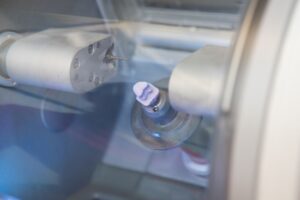 Inlays and onlays are a type of filling between standard fillings and veneers. It is preferred in cases where there are problems that do not require veneers but cannot be solved with standard fillings.
Inlays and onlays are a type of filling between standard fillings and veneers. It is preferred in cases where there are problems that do not require veneers but cannot be solved with standard fillings.
Advantages of Inlays and Onlays
- It is fully compatible with the tooth as it is prepared in a laboratory environment.
- Since the materials used are resistant to coloring, there is no discoloration for many years.
- It does not cause any disruption in the dental function, since it is applied only to the damaged part of the tooth.
- They are produced of durable materials.
Differences Between Inlays and Onlays
The main difference between inlays and onlays is in the area they are applied to. The inlays, which are more like fillings, are placed only in the chewing areas of the teeth. But onlays cover these chewing areas.
How to Apply Inlays and Onlays?
The procedure of inlays and onlays is performed in two or three sessions. In the first session the decays are cleaned and the teeth which the inlays and onlays will be applied are measured. A temporary filling material is placed into the tooth and the measurement is sent to the laboratory.
In the second session, temporary filling material is removed and specially prepared inlay or onlay is applied to the tooth.
Things to consider after Inlays and Onlays
Nothing should be eaten for the first 2 hours after the procedure. The person should pay attention to oral and dental hygiene after the inlays and onlays procedure.


